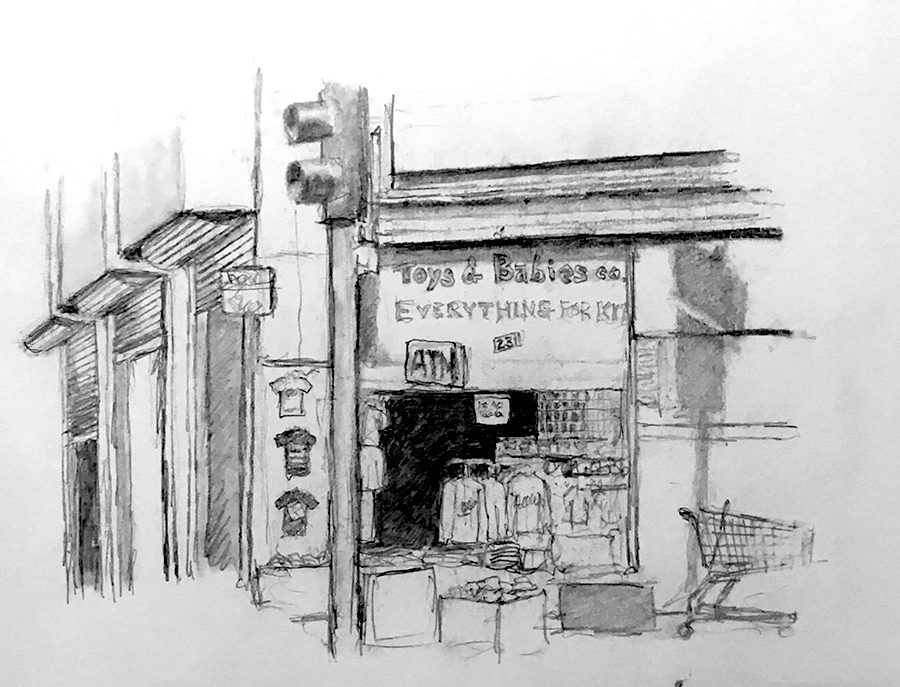
Walking around in the Toy District in Los Angeles, which lies on the border of Skid Row, is a journey through improbable, uncanny juxtapositions. The roughly twelve-block area is comprised of a heterogenous mix of pastel-painted stores selling wholesale, low-end merchandise. Racks upon racks of printed T-shirts, plush toys, flags, plastic cars and all other manner of miscellany bulge out of the open lift gate entrances. Like other commercial districts dedicated to one type of product – New York’s garment and flower districts come to mind – there’s an atmosphere of lean efficiency and hustle: advertising is minimal and presentation is an afterthought. Prospective buyers dart in and out of stores, haggling with business owners (who affect bored disinterest). The district’s position adjacent to Skid Row means that the sidewalks of many blocks are also crowded with makeshift shelters, shopping carts, discarded baggage and trash. On one corner a dirty sleeping bag lies next to a display rack filled with gaudy piñatas; on a nearby street a disheveled, agitated man is busy removing and inspecting a shoe while a shop employee sweeps the sidewalk next to him. As is the case in any area with a large homeless population, shopping carts abound; some empty and broken, some filled with belongings. It’s impossible to pass along these bustling, beaten down streets without thinking about the scandalously short lifespan of consumer goods. A scenario like the following comes to mind: a pink teddy bear is produced in China and exported to the U.S., sold to someone here on East 4th Street, and a week or so later it ends up a ragged lump in a puddle on the next corner.
Leave a comment